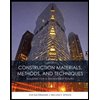How can the cracking of any attached brittle materials such as concrete or plaster be prevented?
How can the cracking of any attached brittle materials such as concrete or plaster be prevented?
It is commonly believed that cracks are due to any foundation issues, although it is not always right and therefore should not be called structural weakness or poor quality work or incorrect design. In particular, limits of 1/16 to 1/4-inch-wide cracks are appropriate.
The cracks of any attached brittle materials such as concrete or plaster can be prevented by the following methods:
- Use of quality materials and proper concrete mix design
- Reduction of water content in concrete
- Proper curing of concrete
- Concrete surface finishing
- Providing concrete control joints
- Proper soil compaction to prevent concrete settlement cracks
- Proper concrete placement and vibration
- Use of quality materials and proper concrete mix design: The high quality aggregates should be used to reduce the shrinkage. The shrinkage of the concrete can be minimized by using dense, hard aggregate and by maximizing the aggregate gradation. Prevent the use of admixtures that facilitate shrinkage (such as dirty aggregate that raises water demand, accelerators and cement with high shrinkage properties). The concrete should be correctly proportioned and blended properly. The cracks are must when too little cement is used. It would make the concrete weak by using too much water, resulting in cracking.
2. Reduction of water content in concrete: The quality of concrete would be influenced by a low water-cement ratio. In concrete, a lower water cement ratio contributes to high strength and lower cracks. Less water content increases concrete 's durability. Through alterations in temperature and moisture, concrete expands and shrinks. Shrinkage is the key cause of cracks that evaporate the excess water as concrete hardens and thereby shrinks, so less water content means less shrinkage.
3. Proper curing of concrete: Stopping the rapid loss of surface water or drying of concrete due to hydration (liquid is converted to plastic and then solid state) allows the slab to dry out, so it is necessary that the slab be cured for several days. Covering the slab with water-soaked cotton mats or spraying on a curing compound often avoids water loss. During the curing phase, the concrete should not be subject to load.
Step by step
Solved in 7 steps


